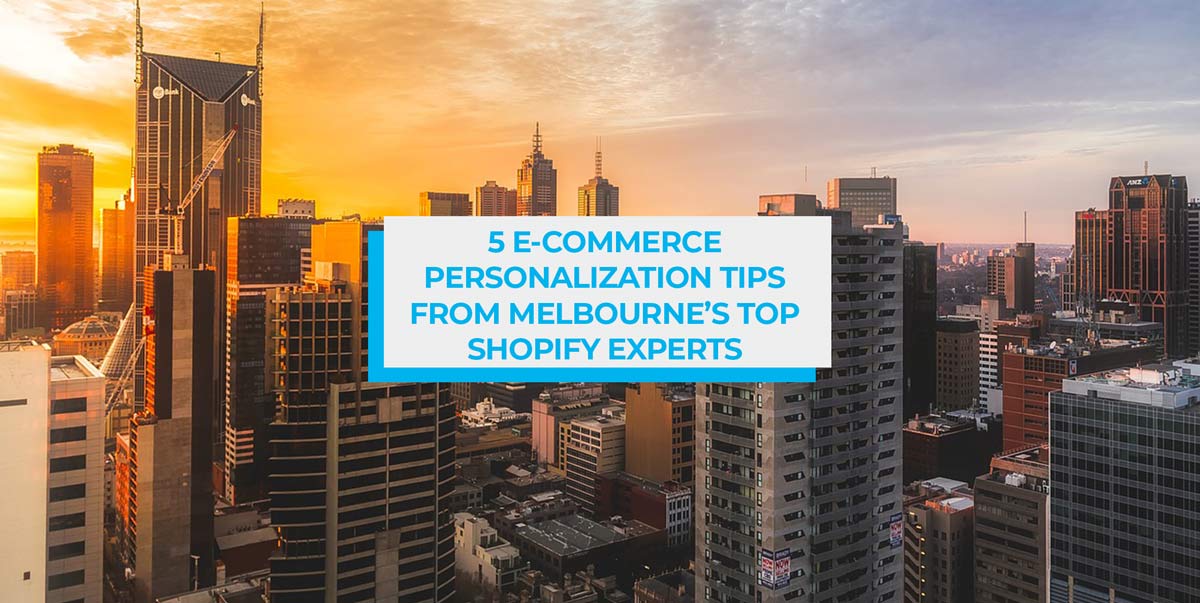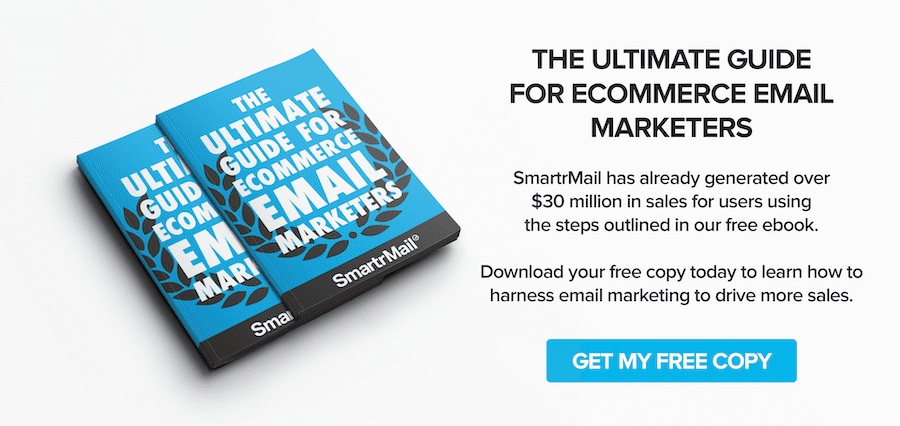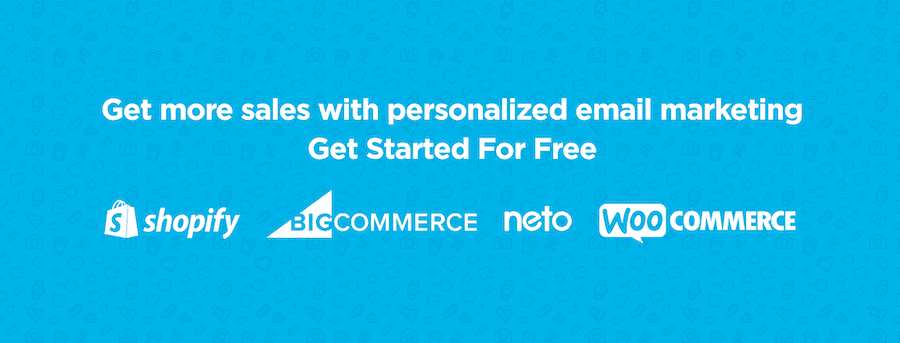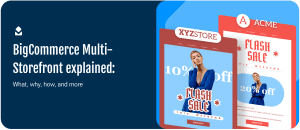We interviewed three of Melbourne’s top Shopify experts to get their tips on how Shopify stores can get more sales through personalization.
You want more sales for your store right? Read on…
Why use personalization?
Personalization is an important tool in e-commerce marketing.
Creating a cohesive online shopping experience through personalization is something that customers want. 74% of shoppers are frustrated when shown content that is not personalized.
Camila and Bryce, directors of Shopify e-commerce and POS agency Gorilla Lab, share this belief, stating that “customer’s expectations and needs are becoming more sophisticated” due to changes in the retail and e-commerce landscape over the last few years. In order to stand out from the crowd and reach your target audience, Camila and Bryce emphasize that e-commerce stores need to “present relevant content that matches customers’ interests and needs from pre-purchase to order and fulfilment and post-sale marketing”, in order to “strengthen your brand and create a bond with your customers”.
Paul Hill, the director of Insider Media Group, who specialize in website design, SEO and digital marketing, also believes that personalization is important. He acknowledges its role in allowing online retailers to create “a virtual experience that is as close as possible to physically walking into a bricks and mortar store”. In fact, 72% of shoppers want cohesion in their experience between shopping online and in a physical store.
As a result, according to Cal Wilson, director of digital design and development agency The Working Party, this will help to differentiate your e-commerce store from the rest: “Setting up eCommerce is becoming increasingly simple. By tailoring the shopping experience of their customer, based on past behaviour, demographics or interest, a brand can move from run of the mill store to shopping destination.”
Implementing personalization is key to establishing a stronger relationship between customers and your brand and boosting customer satisfaction by giving them a more tailored online shopping experience. This will also increase your customer retention and customer lifetime value, creating high value customers for your e-commerce stores.
In turn, this results in better customer engagement. Paul Hill explains that Insider Media Group “are always advising [their] online retailers to treat their customers individually”. He has found that clients who apply personalization to the customer experience “not only receive better feedback from their customers” but also “have seen a solid increase in conversion rates and repeat sales”.
Gorilla Lab’s Camila and Bryce have seen similar results. They have noticed “increases in engagement, high conversion rates and more repeat customers” for their clients after “having implemented technologies such as SmartrMail, loyalty and rewards programs, and personalised shipping and fulfilment process”.
The Working Party’s Cal Wilson similarly notes that personalization is worth implementing, seeing “a definite increase in average basket size and customer lifetime value”, which leads to a massive return on investment.
But how can you start using personalization in your own e-commerce store? Here are 5 tips from Melbourne’s top Shopify agencies.
1. Make sure you’ve covered the basics
Before you begin implementing personalization, it’s important that you have the basics covered for your e-commerce store. Gorilla Lab’s Camila and Bryce suggest that store owners make sure that they have a “responsive website that provides a user-friendly experience on any device”. Ensure that you provide a good mobile shopping experience for your customers – this will improve customer satisfaction.
A Business Insider report found that even though people spend 59% of their time on mobile devices (compared to 41% on desktop), only 15% of their money is spent while browsing on mobile. The main reason for this is that many sites are not mobile optimized.
Additionally, Camila and Bryce also emphasize the importance of integrating your POS with your e-commerce store, if you’re a bricks and mortar store. This will allow you to provide a “seamless experience across multiple sales channels”. Omnichannel marketing is certainly something you should be making use of in order to create a hassle-free online shopping experience for your customers.
To read more about how you can incorporate omnichannel marketing in your e-commerce store, read here: A Beginner’s Guide to Omnichannel Marketing for Ecommerce.
2. Curate your emails with personalized content
Cal Wilson from The Working Party believes that the best place to begin implementing personalization is by “configuring your email marketing tool”. He suggests that “if it doesn’t come with personalisation options, change to one that does”.
Insider Media Group’s Paul Hill says that personalization is easy to put into practice through email marketing. He especially notes the importance of online retailers’ email lists in implementing personalization via email marketing. From there, Paul suggests “[p]ersonalising bulk email sends with suggestions of products and offers that you know are more relevant to a particular customer”, which “will prove to be a very effective marketing strategy”.
According to a report from Experian, marketing emails that include personalization can lead to a 27% higher unique click rate, an 11% higher click-to-open rate and more than double the transaction rates compared to emails from the same brand that did not include any personalization.
Paul also recommends that stores making use of email marketing should be “spending the time to curate a range of products that would appeal to a particular customer group”, which will in turn “yield a higher than average traffic and conversion result for each EDM”.
3. Email list segmentation based on activity
Also noting the ease of utilizing personalization as a tool in email marketing, as well as the effectiveness of this marketing channel, Camila and Bryce suggest using segmentation as a way to personalize product recommendations sent to customers. They state that “automatically segmenting your customers based on previous purchase history, browser behaviour and email clicks will give you the insight to recommend great products”.
They suggest that store owners can creating a valuable online shopping experience by using segmentation. They provide this example: “a customer who purchased a new Canon camera is not likely going to be interested in Nikon gear but is likely interested in new Canon camera lenses”.
Email list segmentation is a strategy you should definitely be making use of – segmented email campaigns can result in an increase of 760% in revenue.
To read more on how you can start implementating email list segmentation, read here: 6 Ways You Can Segment Your Email List with SmartrMail.
4. Research different Shopify apps
One of the benefits of using Shopify to create and manage your e-commerce store is the massive marketplace of apps that are available to you.
By simply entering a keyword like ‘personalize’, The Working Party’s Cal Wilson suggests that you can “start customising the shopping experience in Shopify” by making use of the “many apps off-the-shelf that can do part of the job”. Some of the more technical apps, according to Cal, “can start storing customer information in Metafields and changing content displayed based on that”.
Finding the right personalization apps for your e-commerce store requires research and testing. Make use of free trial offers to get a feel of the compatibility of the app with your store, as well as how effectively it helps you personalize the online shopping experience of your customers.
5. Keep up to date with trends
In order to stay ahead of the curve, Camila and Bryce also suggest “adopting new technologies” as a way to “outsmart your competitors” and ensure the “future growth of your business”.
It’s important that you’re continually looking towards the future by keeping up to date with the latest trends. Not only will this allow you to stand out above competitors, but will also allow you to keep improve the customer experience you provide on your e-commerce store.
Conclusion
You are by now fully aware of the importance of personalization, and are armed with a number of tips from Melbourne’s top Shopify agencies. How do you currently implement personalization to produce a great online shopping experience for your customers? If you’re not making use of personalization, how do you plan to incorporate it into your e-commerce marketing?
Special thanks to Paul Hill (Insider Media Group), Camila and Bryce (Gorilla Lab) and Cal Wilson (The Working Party) for sharing their tips on personalization for e-commerce stores.
Follow them on Twitter: Paul – @insidermediagrp, Cal – @sushi












